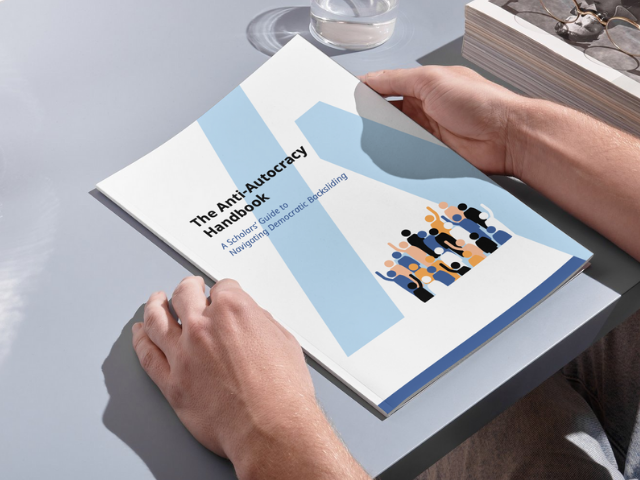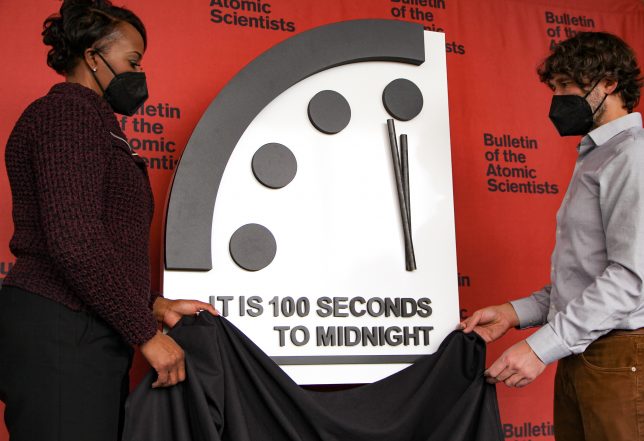
The Anti-Autocracy Handbook offers scholars and concerned citizens practical strategies to recognize and resist democratic backsliding worldwide.
Climate Crisis and Rising Authoritarianism
The fight against climate change is urgent. From stronger hurricanes to record-breaking wildfires, we’re seeing how environmental damage is affecting our lives, our health, and our future. We need governments that act boldly—supporting science, protecting ecosystems, and investing in sustainable energy.
But here’s the problem: around the world, democracy is weakening. As of 2025, 72% of the global population lives under authoritarian rule (Our World in Data, 2025). That means decisions about the environment are being made behind closed doors, without public debate, input from scientists, or the freedom to organize and protest.
When democracy erodes, climate action slows down—or even reverses.
3 Tactics Autocrats Use to Undermine Climate Truth
Authoritarian leaders often use a familiar playbook to shut down climate efforts. These tactics make it harder for us to work together, share facts, and push for change.
Populism
Autocrats often claim to represent “the real people” against so-called “elites.” Environmentalists, scientists, and activists are painted as out of touch or as enemies of economic growth. We’ve all heard messages like:
- “They care more about trees than our jobs.”
- “Climate rules are killing small businesses.”
Polarization
Instead of bringing us together to solve problems, these leaders divide us. They frame the climate debate as a fight between “pro-economy” and “pro-environment.” But that’s a false choice. In truth, we can have both—but only with honest leadership and a commitment to facts.
We’ve seen this kind of rhetoric used to create fear and distrust. For example:
- During wildfires in the western U.S., climate regulations were blamed for preventing forest management, despite scientific evidence that climate change was the real driver of more intense fires.
- In Brazil, environmental protections in the Amazon were rolled back under the argument that indigenous land rights and conservation efforts were standing in the way of economic growth and agriculture.
- In Australia, leaders have claimed that transitioning away from coal would destroy communities—ignoring opportunities for renewable energy jobs and cleaner air.
- In the U.S., efforts to ban gas stoves or regulate methane emissions have been painted as “attacks on personal freedom” or “government overreach,” rather than smart policy to protect health and reduce climate risk.
These arguments aren’t just political talking points—they’re tactics to delay action, confuse the public, and weaken support for urgent climate solutions.
By turning climate change into a culture war, autocratic-leaning leaders make it harder to build the broad coalitions we need. The more we’re divided, the less power we have to demand meaningful change.
Instead of bringing us together to solve problems, these leaders divide us. They frame the climate debate as a fight between “pro-economy” and “pro-environment.” In truth, we can have both—but only with honest leadership.
Post-truth
This is when facts are buried under lies and confusion. Misinformation spreads through social media and partisan news outlets. People are left unsure of what’s real. When that happens, public trust in science—and in one another—breaks down.
What Happens to Science in Autocratic Systems
Science depends on freedom—freedom to ask questions, publish findings, and share data across borders. But under authoritarian rule, science often becomes one of the first victims.
In early 2025, the U.S. National Institutes of Health (NIH) canceled nearly 800 research projects. This included many studies focused on climate change, vaccine hesitancy, and LGBTQ+ issues (The Anti-Autocracy Handbook, 2025).
At the same time:
- The U.S. withdrew from the Paris Climate Agreement
- Clean energy programs were dismantled
- Scientists were banned from collaborating with global health agencies like the WHO
When governments silence science, our communities are left vulnerable. We lose access to life-saving information. And the climate crisis continues unchecked.
Why Silence and Self-Censorship Make Things Worse
We may wonder: why don’t more people speak out? The truth is, many are scared. Scientists have faced online harassment, legal threats, or even job loss just for sharing their findings.
Some researchers have stopped speaking publicly about climate to avoid becoming targets. This self-censorship, while understandable, allows misinformation to spread even more.
And it’s not just about facts—it’s about people. The pressure to stay quiet can take a toll. Many scientists and activists report anxiety, burnout, and a feeling of isolation. They’re not just defending their work—they’re trying to protect their families and livelihoods, too.
We don’t need to be scientists or politicians to make a difference. What we do—and how we show up—matters.
What We Can Do—Even if We’re Just Individuals
If our personal risk is low:
- Speak out: Write letters to the editor or post on social media about why climate truth matters
- Join a local group: Support environmental or science-based organizations
- Share voices: Amplify scientists, students, and communities speaking up
If our risk is higher (e.g., we’re public figures, immigrants, or part of a marginalized group):
- Help protect vulnerable research: Backup and archive climate data
- Build circles of solidarity: Create support systems within our communities or workplaces
- Document censorship: If safe to do so, record and report efforts to silence truth
Even small acts—like refusing to repeat false claims—can help keep truth alive.
The Power of 3.5%: Hope in Collective Action
Here’s something encouraging: nonviolent movements that mobilize just 3.5% of the population almost always succeed (Chenoweth & Stephan, 2011). That’s about 12 million people in the U.S.
We don’t need a majority to protect democracy or fight for climate justice—we just need enough people who are committed, informed, and connected.
Together, we can slow democratic backsliding, protect science, and keep pushing for a healthy, just, and sustainable future.
Protecting Democracy Is Climate Action
If we care about clean air, safe water, healthy forests, and a livable planet—then we care about democracy, too.
We can’t tackle climate change in a world where scientists are silenced, facts are twisted, and decisions are made in secret. By protecting the right to speak, research, protest, and vote, we’re also protecting our planet.
Let’s keep asking questions. Let’s keep telling the truth. And let’s keep building the future we all deserve—together.
Overview of the Source: The Anti-Autocracy Handbook
This article is based on The Anti-Autocracy Handbook: A Scholars’ Guide to Navigating Democratic Backsliding (2025). Written by more than 20 scholars around the world, the handbook explains how authoritarian regimes gain and maintain power—and what we can do to resist.
Key features of the handbook include:
- A clear breakdown of authoritarian tactics like populism, polarization, and misinformation
- Real-life examples of how science—including climate research—is being attacked
- Strategies for protecting truth, data, and fellow researchers
- Practical steps we can take, based on our level of personal risk
Sources:
Lewandowsky, S., Kempe, V., Armaos, K., Hahn, U., Abels, C. M., Wibisono, S., Louis, W., Sah, S., Pagel, C., Jankowicz, N., DiResta, R., Markolin, P., Schoenemann, H., Hertwig, R., Crull, H., Mauer, B., Holford, D., Lopez-Lopez, E., & Cook, J. (2025, June 19). The Anti-Autocracy Handbook: A Scholars’ Guide to Navigating Democratic Backsliding. https://zenodo.org/records/15696097
Our World in Data. (2025). Less Democratic: Share of Population Living in Autocratic Regimes. https://ourworldindata.org/less-democratic
Chenoweth, E., & Stephan, M. J. (2011). Why civil resistance works: The strategic logic of nonviolent conflict. Columbia University Press.

